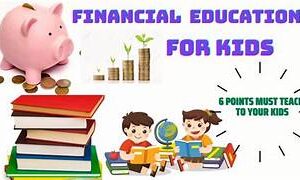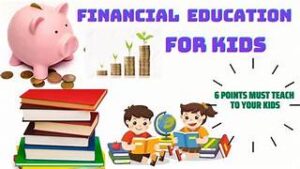Personal finance education for kids is a way of building strong foundations for financial well-being that can last a lifetime. Teaching children about budgeting, saving, investing, and responsible spending from an early age, can empower them with the tools to make informed financial decisions. This knowledge enhances critical thinking skills, fosters goal-setting abilities, and instills a sense of financial responsibility.
With practical application and involvement from parents and caregivers, it is possible to create a change. The change will make the whole generation that is financially literate, confident, and capable of navigating the complexities of the financial world.
In today’s complex and ever-changing world, personal finance skills are crucial for navigating the intricacies of our financial lives. Yet, there is a prevailing gap in financial knowledge among individuals. It leads to poor financial decisions, debt burdens, and a lack of financial independence and security.
Let’s know more about it.
Understanding the Benefits
The benefits of personal finance education for kids, in the early years, extend far beyond mere theoretical knowledge. Research has consistently shown that individuals who receive financial education early in life demonstrate improved financial behaviors and decision-making skills.
Introducing the following concepts is necessary.
- Budgeting,
- Saving,
- Investing, and
- Debt management,
By making them aware of these concepts, we can instill positive financial habits that last a lifetime. Moreover, personal finance education enhances critical thinking, problem-solving, and numeracy skills, which are transferable to various aspects of life.
Children learn to set and manage goals effectively, develop a sense of delayed gratification, and comprehend the consequences of financial choices. These skills are invaluable as they transition into adulthood, where financial independence and responsibility become paramount.
Practical Implementation
To ensure the effectiveness of personal finance education, it is essential to design a comprehensive and age-appropriate curriculum.
The curriculum should cover a range of topics which includes the following:
- Basic financial concepts,
- Saving strategies,
- Budgeting techniques,
- Understanding credit and debt,
- Evaluating investment options, and
- Importance of financial goal setting.
By progressively introducing these concepts throughout different grade levels, we can build a solid foundation of financial literacy.
Practical application is key to reinforcing the lessons learned. Simulations, interactive exercises, and real-world case studies can be incorporated into the curriculum to provide hands-on experience. Partnering with financial institutions, educators, and experts in the field can also enrich the learning process by bringing in practical insights and diverse perspectives.
Furthermore, involving parents and caregivers in the financial education journey can create a holistic approach. By engaging families in conversations about money management, saving, and responsible spending, we establish a support system that reinforces the principles taught in schools.
Societal Impact
The impact of personal finance education extends beyond individuals. A financially literate society benefits communities, economies, and future generations.
Financially educated individuals are less likely to fall into debt traps, more likely to contribute to economic growth, and better equipped to handle financial emergencies.
A Story (For Motivation)
Once upon a time, in a small town, there lived a young boy named Jai. Jai was fortunate to attend a school that believed in the power of financial literacy. From a young age, he learned the value of money, the importance of saving, and the basics of investing.
As Jai grew older, his financial knowledge became a guiding light in his life. While his friends spent their allowances on instant gratification, Jai carefully budgeted and saved. He started a small business selling handmade crafts and managed his profits wisely, reinvesting in his budding venture.
As time went on, Jai’s financial literacy skills flourished. He discovered the power of compounding, and with patience and strategic investments, his wealth steadily grew. He continued to expand his business, creating job opportunities for others in his community.
But Jai’s impact went beyond his personal success. He recognized the financial struggles faced by many in the town, particularly the underprivileged children who lacked access to education and opportunities. Motivated by a desire to make a difference, Jai used his financial knowledge to initiate a financial literacy program in his school.
Through workshops, mentorship, and engaging activities, Jai shared his expertise with his peers. He taught them about budgeting, saving, and investing, empowering them with the tools to take control of their financial futures. As word spread, the program gained momentum, and soon neighboring schools joined in, creating a ripple effect of financial literacy throughout the town.
The Impact
The impact of Jai’s efforts began to show. The children who participated in the program became more financially responsible. They understood the value of money and made informed decisions about spending and saving. As they grew older, they pursued higher education, started businesses, and became financially independent individuals who could contribute positively to society.
Jai’s story spread far and wide, inspiring other communities to prioritize financial literacy for their youth. His dedication and vision set off a chain reaction, transforming society one financially literate child at a time.
And so, Jai’s legacy lived on, reminding us that a financially literate child can make a profound difference not only in their own life but also in the society in which they live.



